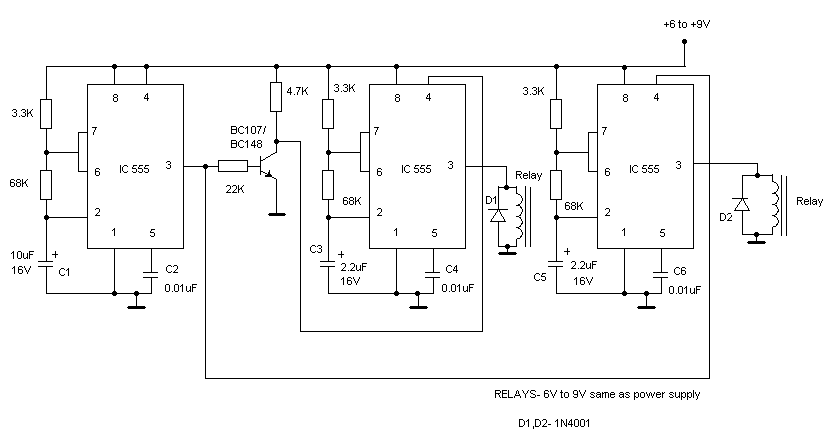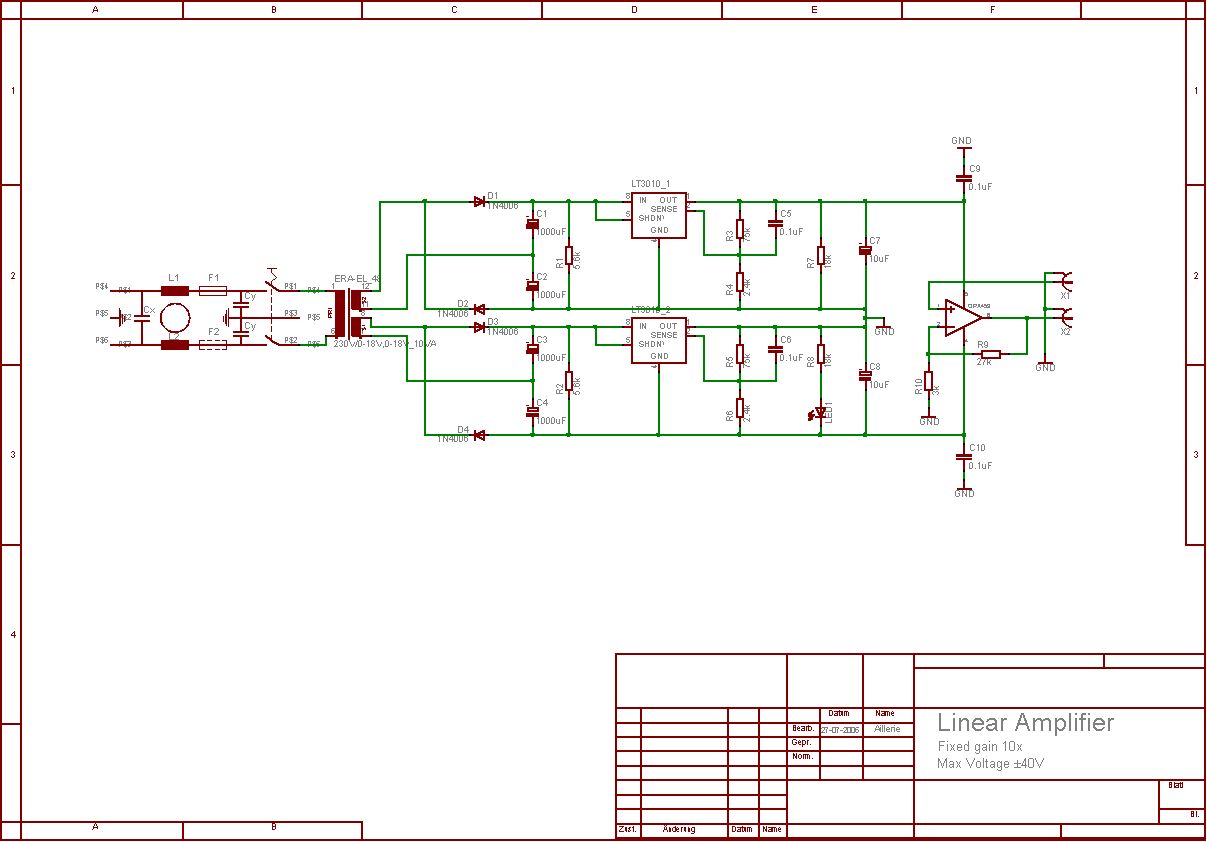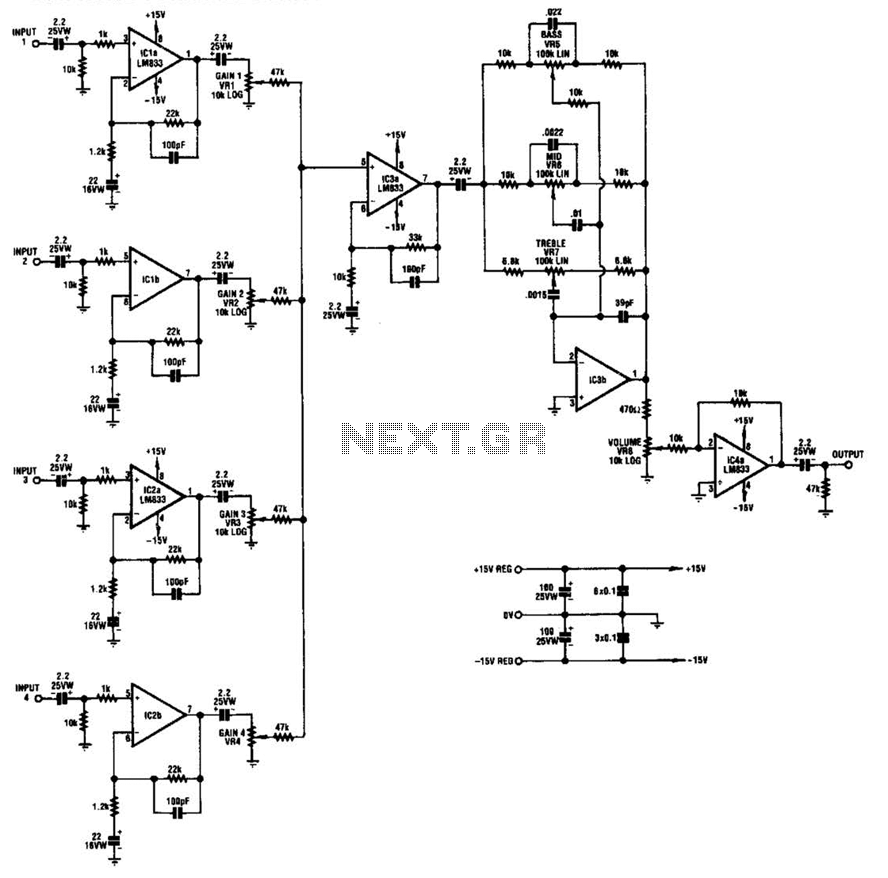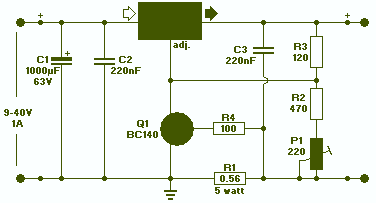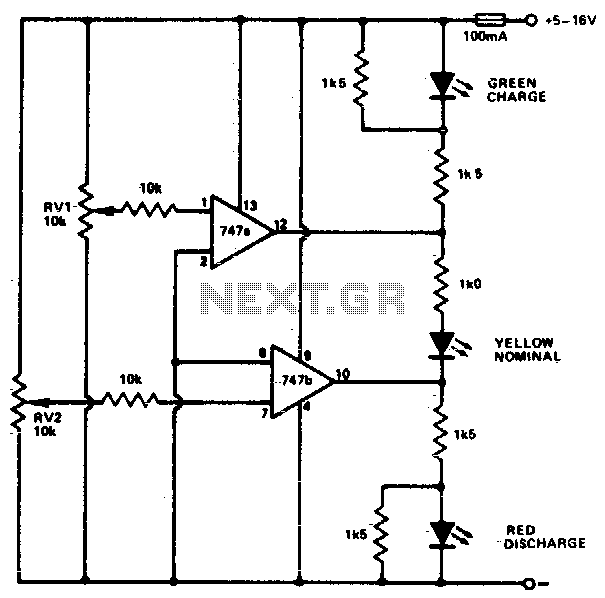
3v low battery voltage flasher
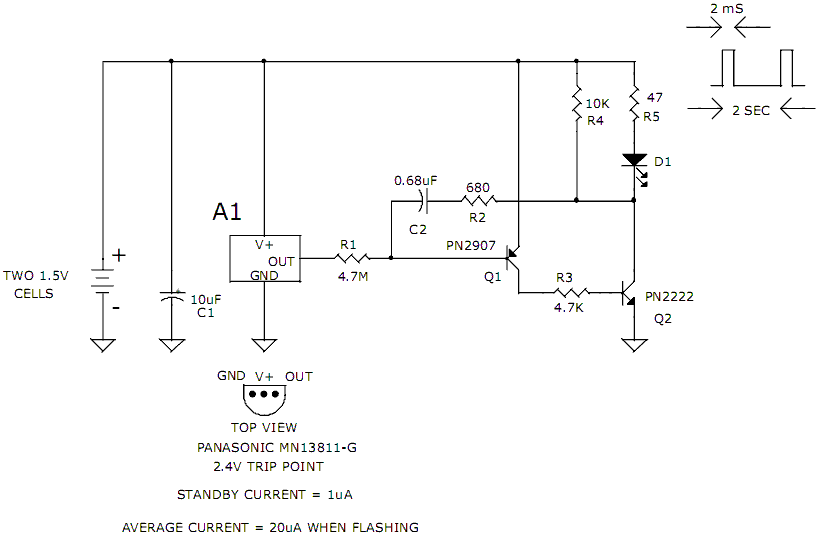
The hobby circuit described can be connected to a 3V battery to provide a warning when the battery is nearing its end of life. It will flash an LED when the battery voltage drops to approximately 2.4 volts. The electronic circuit consumes only 1 µA of current in standby mode and increases to 20 µA when flashing, allowing it to be safely included without significantly depleting the battery energy. A voltage detector IC from Panasonic (similar devices are also made by Microchip) is utilized to monitor the battery voltage. The device's open-drain output goes low when the battery voltage falls below 2.4 to 2.5 volts. This condition activates a two-transistor oscillator circuit, which drives the LED with short current pulses lasting only 2 ms.
The circuit operates on a simple principle of voltage monitoring and low-power consumption, making it suitable for battery-operated devices. The use of a voltage detector IC ensures accurate monitoring of the battery voltage levels. When the voltage drops to the threshold of approximately 2.4 volts, the open-drain output of the IC transitions low, signaling the need for action.
The two-transistor oscillator circuit is configured to respond to this signal, generating a series of short pulses to drive the LED. The design of the oscillator allows it to operate efficiently, producing a flashing effect while consuming minimal current. The LED flashes for a duration of 2 ms, providing a clear visual indication of the battery status without drawing significant power from the battery itself.
This circuit can be particularly useful in applications where battery life is critical, such as in portable electronics or remote sensors. The careful selection of components and the low standby current ensure that the warning system does not interfere with the overall battery performance. Additionally, the simplicity of the design allows for easy implementation in various projects, making it accessible for hobbyists and engineers alike. Overall, this battery warning circuit serves as an effective solution for monitoring battery health in a compact and energy-efficient manner.The hobby circuit below can be connected to a 3v battery, to give you some warning when the battery is nearing its end of life. It will flash a LED when the battery voltage drops to about 2. 4 volts. The electronic circuit draws only 1ua of current in standby mode and jumps to only 20ua when flashing, so it can safely be included without depleting the battery energy.
A voltage detector IC from Panasonic (Microchip also makes similar devices) is used to monitor the battery voltage. The device`s open drain output swings low, when the battery voltage is below 2. 4 to 2. 5 volts. This action turns on the two transistor oscillator circuit, which drives the LED with short current pulses lasting only 2ms.
🔗 External reference
The circuit operates on a simple principle of voltage monitoring and low-power consumption, making it suitable for battery-operated devices. The use of a voltage detector IC ensures accurate monitoring of the battery voltage levels. When the voltage drops to the threshold of approximately 2.4 volts, the open-drain output of the IC transitions low, signaling the need for action.
The two-transistor oscillator circuit is configured to respond to this signal, generating a series of short pulses to drive the LED. The design of the oscillator allows it to operate efficiently, producing a flashing effect while consuming minimal current. The LED flashes for a duration of 2 ms, providing a clear visual indication of the battery status without drawing significant power from the battery itself.
This circuit can be particularly useful in applications where battery life is critical, such as in portable electronics or remote sensors. The careful selection of components and the low standby current ensure that the warning system does not interfere with the overall battery performance. Additionally, the simplicity of the design allows for easy implementation in various projects, making it accessible for hobbyists and engineers alike. Overall, this battery warning circuit serves as an effective solution for monitoring battery health in a compact and energy-efficient manner.The hobby circuit below can be connected to a 3v battery, to give you some warning when the battery is nearing its end of life. It will flash a LED when the battery voltage drops to about 2. 4 volts. The electronic circuit draws only 1ua of current in standby mode and jumps to only 20ua when flashing, so it can safely be included without depleting the battery energy.
A voltage detector IC from Panasonic (Microchip also makes similar devices) is used to monitor the battery voltage. The device`s open drain output swings low, when the battery voltage is below 2. 4 to 2. 5 volts. This action turns on the two transistor oscillator circuit, which drives the LED with short current pulses lasting only 2ms.
🔗 External reference
